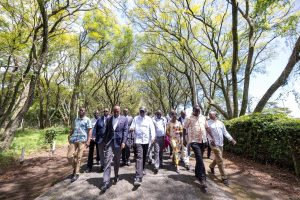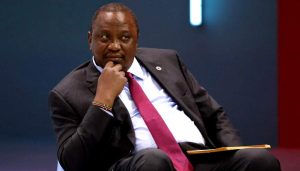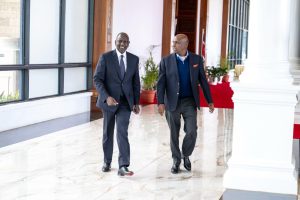Opinion
Political Doyen? Insider Details Emerge As Ruto Lands in Moi’s Kabarak Home in Pomp
Whether Mr Moi will join the Cabinet directly or nominate allies remains unclear, but insiders suggest he has been given the option to either take a ministerial position himself or recommend one or two individuals.
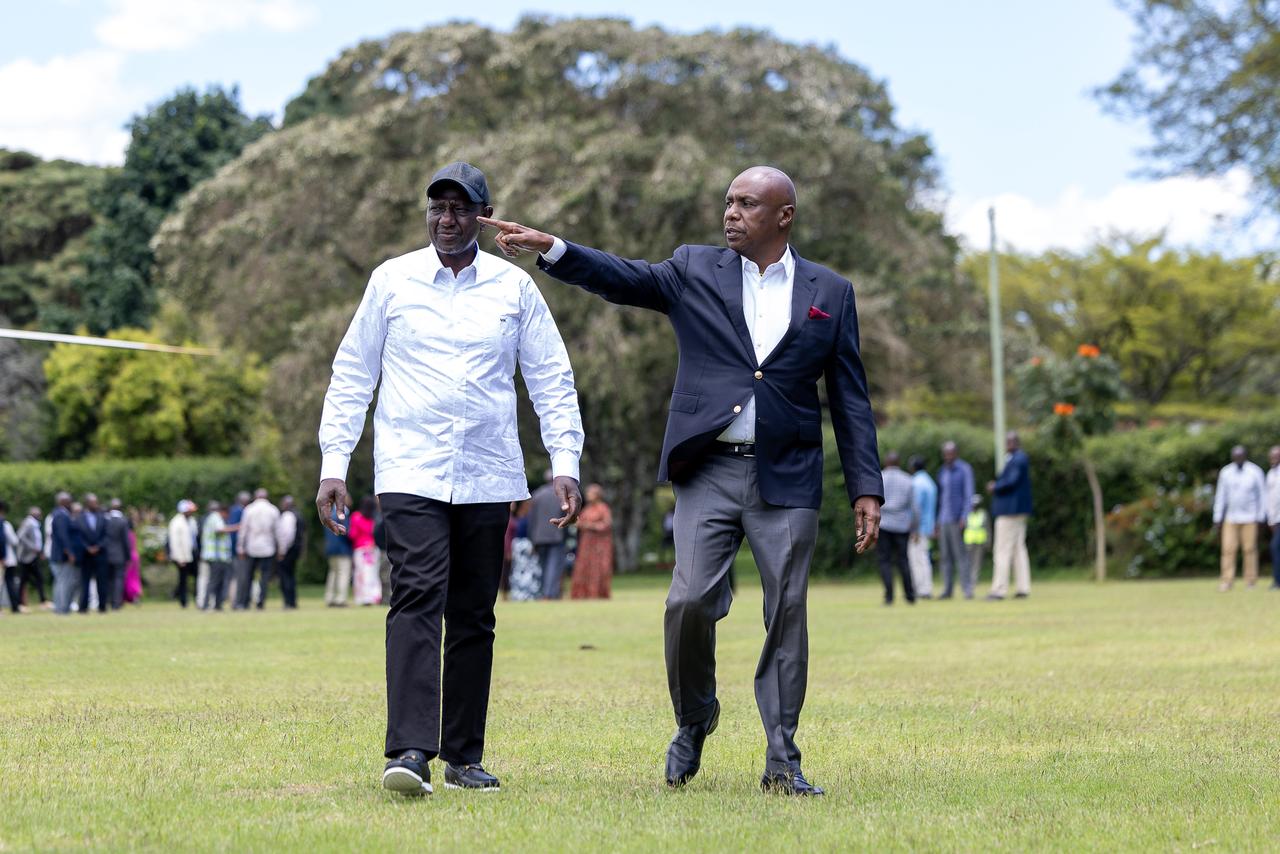
The historic Kabarak estate in Nakuru County witnessed scenes reminiscent of Kenya’s grand political theatre on Friday, as President William Ruto orchestrated what many are calling his most audacious political gambit yet—bringing long-time rival Gideon Moi into his fold.
The visit, draped in symbolism and pageantry, marked the culmination of months of clandestine negotiations that have now thrust the once-mighty Kanu party back into the heart of national politics, just two years before the 2027 General Election.
As hundreds of Kanu supporters gathered at the expansive Kabarak compound—hallowed ground for the Moi political dynasty—President Ruto and the Kanu chairman stood side by side, their handshake sealing a détente that few political observers saw coming.
“This is a national project,” Dr Ruto declared, his voice carrying across the assembled crowd. “We must pull together as a team to move Kenya to the next level.”
The Dynasty Convergence
What makes this political realignment particularly striking is President Ruto’s revelation that he has held parallel discussions with not just Mr Moi, but also former President Uhuru Kenyatta and ODM leader Raila Odinga.
The acknowledgment represents an unprecedented convergence of Kenya’s three main political dynasties—the Kenyattas, Mois, and Odingas—under one broad-based government framework.
For a president who campaigned on a “hustler” narrative against dynastic politics, the irony is not lost on political analysts. Yet Ruto appears to have calculated that co-opting these powerful families is more strategic than confronting them ahead of 2027.
“After the Kabarnet anger, I told him the best place to make our announcement to the public was here at Kabarak,” Dr Ruto explained, referencing the tensions that erupted following Mr Moi’s controversial withdrawal from the November 27 Baringo senatorial by-election.
The choice of venue was deliberate political theatre. By making the announcement at Kabarak rather than State House, Ruto symbolically positioned himself as a peacemaker entering Moi’s domain—a gesture of reconciliation designed to soften the optics of what some see as political conquest.
From Bitter Rivals to Political Bedfellows
The Ruto-Moi relationship has been defined by decades of political rivalry and personal animosity. Their falling out traces back to 1997, when a young Ruto defied President Daniel arap Moi’s directive to step aside for William Chesire in the Eldoret North MP race.
By 2013 and 2017, with Gideon having inherited his father’s political mantle, the rivalry had intensified, with the younger Moi emerging as Ruto’s chief challenger in the Rift Valley.
The nadir came in 2018 when Ruto was dramatically blocked from visiting the ailing former President Moi at Kabarak—a public humiliation that entrenched the bad blood between the two camps and shaped the 2022 election dynamics.
Friday’s imagery of reconciliation at the same Kabarak estate carried profound symbolism. The two men who once could not bear to be in the same room now stood shoulder to shoulder, projecting unity.
“If there’s anyone to blame for Gideon’s change of heart, it is me, not him,” Ruto quipped, taking responsibility for what he framed as a patriotic decision. “We are broadening the broad-based government by including Kanu.”
The Deal: Business and Politics
While both principals avoided specific details, sources close to the negotiations have revealed the contours of the arrangement.
According to a State House official who spoke on condition of anonymity, Mr Moi’s requests centered significantly on protecting his family’s extensive business empire, which has reportedly struggled over the past three years.
“His requests were in terms of his businesses. You know, his businesses have been doing badly in the last three years,” the source disclosed.
The timing of the deal is particularly noteworthy. Just a day before the Kabarak announcement, Mr Moi withdrew from the Baringo senatorial race, clearing the path for the UDA candidate—a move widely interpreted as his part of the bargain.
Whether Mr Moi will join the Cabinet directly or nominate allies remains unclear, but insiders suggest he has been given the option to either take a ministerial position himself or recommend one or two individuals.
Cabinet Reshuffle Looms
The inclusion of Kanu in the broad-based government has triggered anxiety within the current Cabinet, with ministers aware that another reshuffle is inevitable.
“At the moment, it’s very difficult for the President to create additional ministries against the law. What could happen if Gideon or any of his allies is to be brought in the Cabinet is that some people must be dropped,” the State House source explained.
The pattern is already established. When Uhuru Kenyatta visited Ruto at his Ichaweri home in December last year, his allies—Mutahi Kagwe, Lee Kinyanjui, and William Kabogo—were subsequently incorporated into the Cabinet.
Similarly, Raila Odinga’s rapprochement with Ruto yielded Cabinet positions for Opiyo Wandayi, John Mbadi, Hassan Joho, Wycliffe Oparanya, and Beatrice Askul.
National Assembly Minority Leader Junet Mohamed, an Odinga ally, confirmed that the broad-based arrangement continues to expand.
“More people are joining, and more are expected,” Mr Mohamed said. “There are a lot of night meetings going on. Some of the people claiming to be in the united opposition, very soon, they’ll find themselves in the broad-based government.”
Strategic Calculus
For President Ruto, the inclusion of Kanu serves multiple strategic objectives.
First, it gives him firmer control of the Rift Valley, a region where Moi still commands symbolic influence despite Kanu’s diminished electoral fortunes since 2002.
Second, it further fragments any potential opposition coalition ahead of 2027, making it difficult for rivals to coalesce around a unified challenge.
Third, it reinforces Ruto’s narrative of building a national, inclusive government—even if critics argue he is simply buying off potential opponents.
“This is not about individuals, personalities, this is not about parochialism, corners or regions. It is about Kenya,” Dr Ruto insisted. “Development in Kenya is late. We are not supposed to be a Third World country. I need more hands and that is why I formed the broad-based government.”
Kanu’s Response: Mixed Reactions
Within Kanu, the response has been decidedly mixed. While party officials at Kabarak cheered the announcement, some MPs expressed frustration at the lack of consultation.
Samburu West MP Naisula Lesuuda delivered an unusually public rebuke, accusing Mr Moi of failing to communicate his decision in a timely manner.
“The choice to run or not to run for the Baringo Senatorial seat is purely your personal decision. But my only concern—and that of many who have believed in you and the party—is your choice not to give direction and not to communicate on time. We feel not listened to, not heard or felt,” she wrote on social media.
Former Kanu Secretary-General Nick Salat, who had already decamped to Ruto’s camp, said he felt vindicated by the turn of events.
Academic Perspectives: Trophies Don’t Vote
Political analysts have offered mixed assessments of Ruto’s strategy.
Professor Gitile Naituli of Multimedia University described Moi as “a dynastic trophy” for Ruto’s collection.
“But… trophies don’t vote, they don’t mobilise, and don’t inspire the next generation. Power that is borrowed never lasts, and silence that is purchased soon grows costly,” Prof Naituli cautioned.
The academic perspective highlights a key challenge for Ruto: while co-opting dynastic figures may neutralize immediate threats, it risks alienating his original base, which rallied around his anti-establishment “hustler” message.
Uhuru’s Shadow Role
Perhaps the most intriguing dimension of this political realignment is the shadow role of former President Uhuru Kenyatta.
Although officially retired, Kenyatta reportedly encouraged Raila Odinga to reach out to Ruto during the height of last year’s anti-Finance Bill protests—a claim Odinga has made publicly and which Kenyatta has never denied.
Ruto’s acknowledgment of discussions with Kenyatta suggests a behind-the-scenes détente between two men whose relationship collapsed spectacularly during the latter half of the Jubilee government.
However, the picture is complicated by reports that Kenyatta is simultaneously positioning his former Interior Cabinet Secretary, Dr Fred Matiang’i, as a potential challenger to Ruto in 2027.
Whether Kenyatta is playing both sides or genuinely seeking to stabilize the country remains a subject of intense speculation in political circles.
The 2027 Calculation
With less than two years to the next General Election, the stakes of this political realignment cannot be overstated.
By bringing Odinga, Kenyatta’s allies, and now Moi into his government, Ruto has effectively neutralized the three main sources of organized opposition.
The broad-based government now commands a comfortable majority in Parliament, with most ODM MPs backing government-sponsored bills.
Yet this strategy carries risks. Each new addition to the coalition requires accommodation—Cabinet positions, state appointments, protection of business interests—creating a delicate balancing act that could collapse under its own weight.
Moreover, the very act of embracing dynasties undermines the populist narrative that brought Ruto to power. Whether his base will accept this transformation from outsider to power broker remains to be seen.
As the political dust settles from Friday’s Kabarak spectacle, attention now turns to implementation. What specific role will Moi play? Which Cabinet members will be sacrificed to make room? And how will Ruto manage the competing interests of his increasingly crowded coalition?
The answers to these questions will shape Kenya’s political landscape as the country hurtles toward 2027.
For now, one thing is clear: William Ruto has demonstrated a ruthless pragmatism in consolidating power, co-opting rivals who once seemed implacable enemies.
Whether this makes him a political doyen or simply a skilled operator buying temporary peace remains to be seen.
What is certain is that at Kabarak on Friday, history was made—and Kenya’s political chessboard was fundamentally reordered.
Kenya Insights allows guest blogging, if you want to be published on Kenya’s most authoritative and accurate blog, have an expose, news TIPS, story angles, human interest stories, drop us an email on [email protected] or via Telegram
-
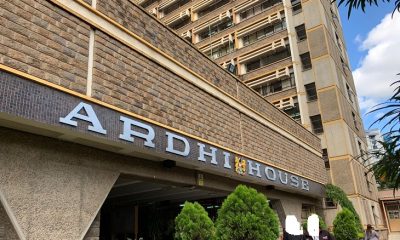
 Investigations2 weeks ago
Investigations2 weeks agoHow Land Grabbing Cartels Have Captured Ardhi House
-

 News2 weeks ago
News2 weeks ago48-Year-Old Woman Who Pushed 25-Year-Old Boyfriend To Death From 14th Floor Kilimani Apartment Arrested
-

 News2 weeks ago
News2 weeks agoChristine Lewis Arrested in the US After Allegedly Posing as Registered Nurse
-

 Business1 week ago
Business1 week agoPanic As Payless Africa Freezes With Billions of Customers Cash After Costly Jambopay Blunder
-

 Business2 weeks ago
Business2 weeks agoSHOCKING LOAN SCANDAL: Mwananchi Credit Slammed for Turning Sh7 Million Loan Into Sh22 Million Debt Trap
-
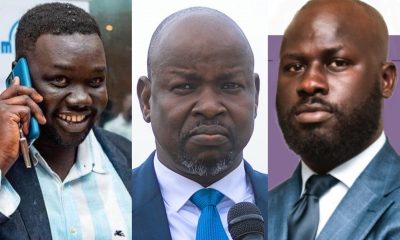
 Africa2 weeks ago
Africa2 weeks agoPredators of South Sudan: Young “Guardians” Loot Billions
-

 News1 week ago
News1 week agoSCANDAL: Cocoa Luxury Resort Manager Returns to Post After Alleged Sh28 Million Bribe Clears Sexual Harassment and Racism Claims
-

 Business2 weeks ago
Business2 weeks agoMwananchi Credit Faces Massive Lawsuits After Court Flags Predatory Lending That Left Customers’ Loans Ballooning

